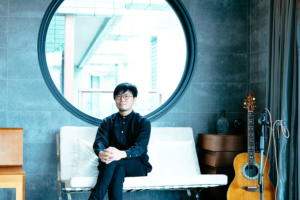How a Japanese Warehouse got Success by Reinventing itself
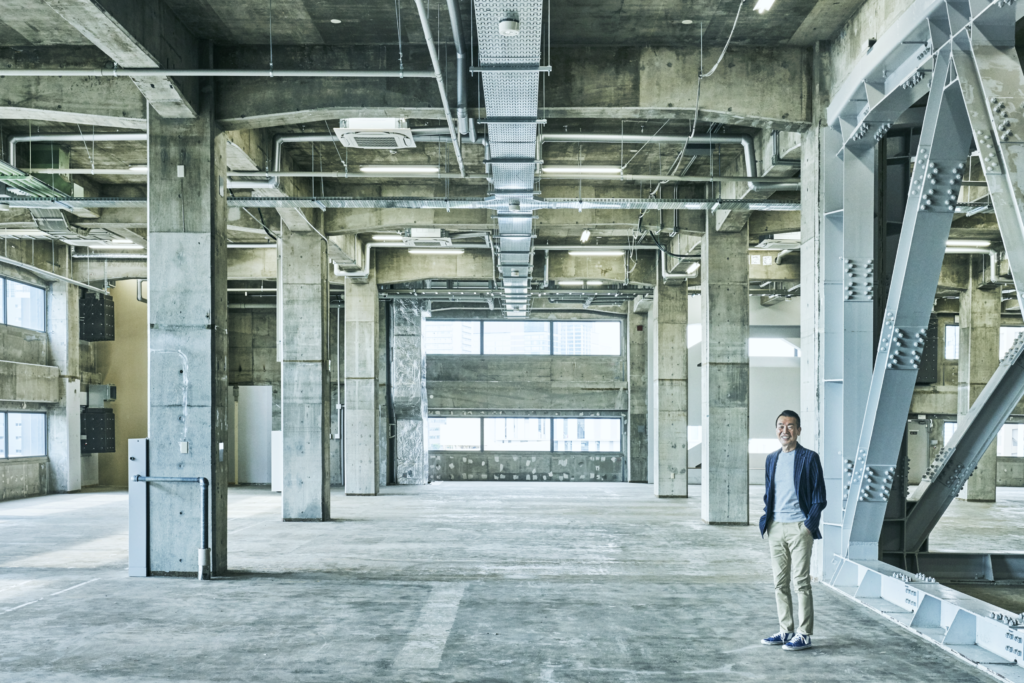
How did the old warehouse company become like a startup firm, churning out new businesses one after another? We ask the CEO of Warehouse Terrada.
The original article “Time is value” is a part of the WORK MILL with Forbes JAPAN Issue 3 — The Age of Post-Innovation ©WORK MILL, published on October 2, 2018
We ask Yoshihisa Nakano, the CEO of Warehouse Terrada and the central figure of its reformation.
Over the past few years, remarkable changes have been made around the boardwalk enormous graffiti art, shops, and restaurants housed in renovated warehouses… It’s almost like you’re in Brooklyn’s warehouse district. The company behind the area’s development is Warehouse TERRADA, established in 1950.
“We were being left behind as a warehouse company, losing out to our competitors. But I realized, we were entrusted with some pretty interesting things,”
says Yoshihisa Nakano, who became the CEO of Warehouse TERRADA in 2012.
Warehouse TERRADA
Focuses on wine, art, and media storage, TERRADA also builds web services. In August, it started a commodity sharing business for companies called “minikura+.”
He’d been an advisor to the company for over 35 years and officially joined the company in 2010 after being recruited by the CEO at the time.
Back then, Warehouse TERRADA was stagnant, caught up in price wars due to the prolonged recession. They offered purpose-oriented warehouse services such as Japan’s first authorized storage room business (1975), a film and analog tape storage business (1983), wine cellar services with climate control (1994), etc. But the profit structure was posing a problem.
“The warehouse business is all about how fast you can move things. Once robotics become more common, expansive single-story warehouses will be the most efficient. But our warehouses are comparatively small, and the goods we store are things that aren’t moved. So I went for a ‘contrarian’ approach.”
Mr. Nakano divided the 1,500-strong company by sector and sold each one. The firm was now a tight organization with only 100 employees. He focused his attention on a 300 thousand-square meter space over Tennozu and sold the rest. He rearranged the remaining sectors around wine, media, and art.
“What was being stored in the warehouses weren’t just costly items, but things people couldn’t let go of. Memories were being stored in our warehouses. Archiving is a way to produce value, and it increases with time. I figured if we focused on that, there could be great possibilities.”
Since 2012, Warehouse TERRADA has been churning out new businesses. Starting with the cloud storage system “minikura,” they began concierge services with exclusive sommeliers, personal wine cellar services with lounges, the “Asian Art Award” where they discovered artists, a digital sheet music viewing device called “GVIDO,” and more.
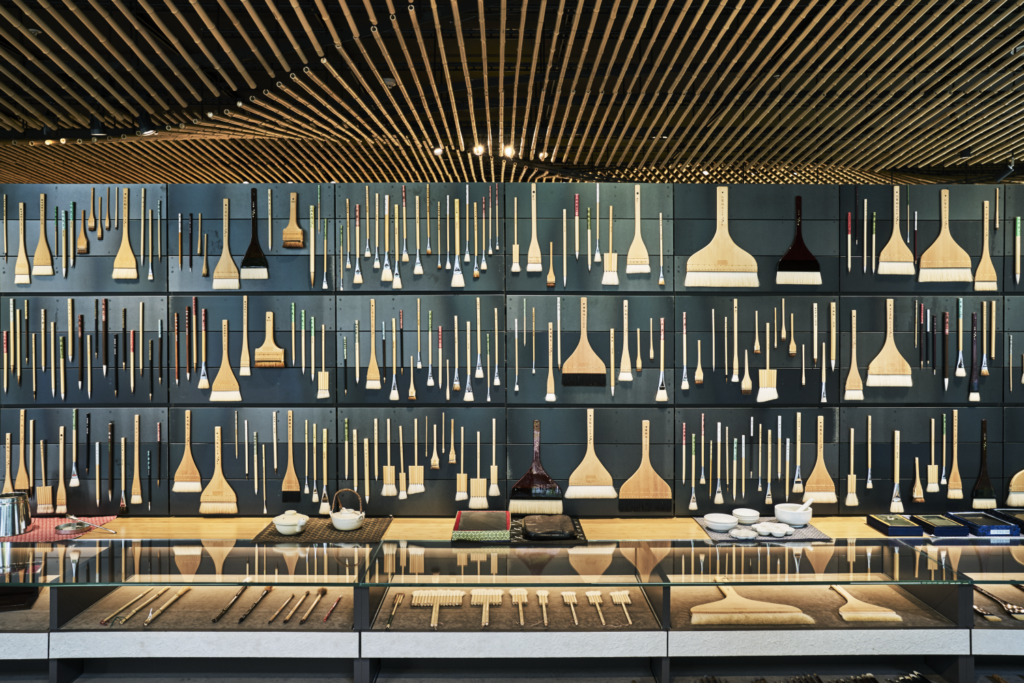
PIGMENT
An assortment of rare Japanese brand art supplies is offered by art supply experts. Brushes line the walls of PIGMENT as if displayed in an exhibition. They offer a rich assortment of art supplies, such as 4,500 paints and over 200 ink sticks. Workshops are held regularly for everyone from beginners to professionals.
Architect Kengo Kuma designed the shop.
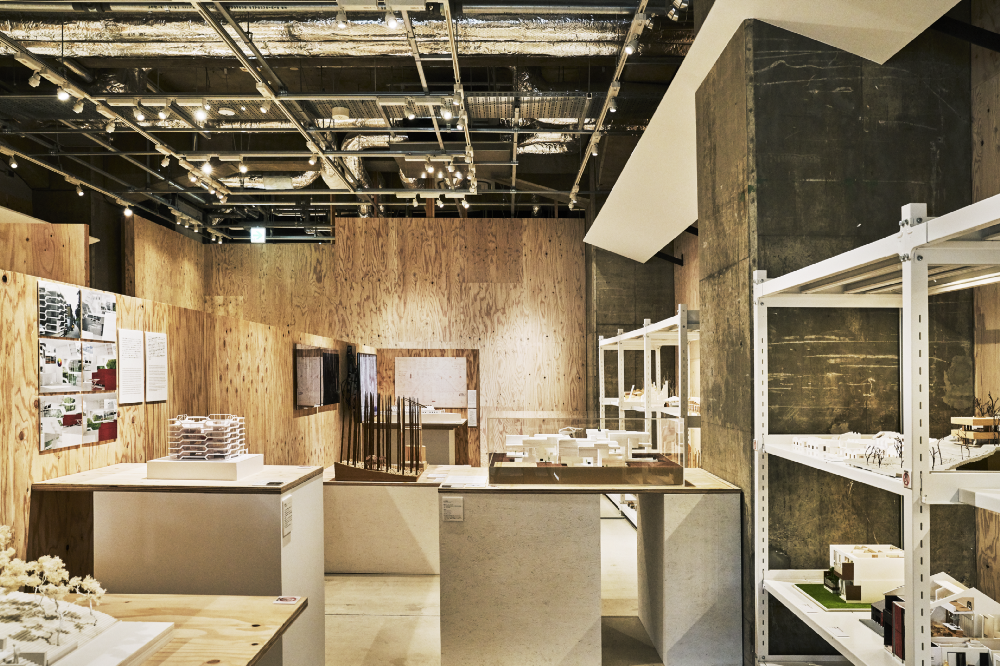
ARCHI-DEPOT Museum
A museum specializing in architectural models. Models of works in and out of Japan by Japanese architects and firms line the warehouse shelves.
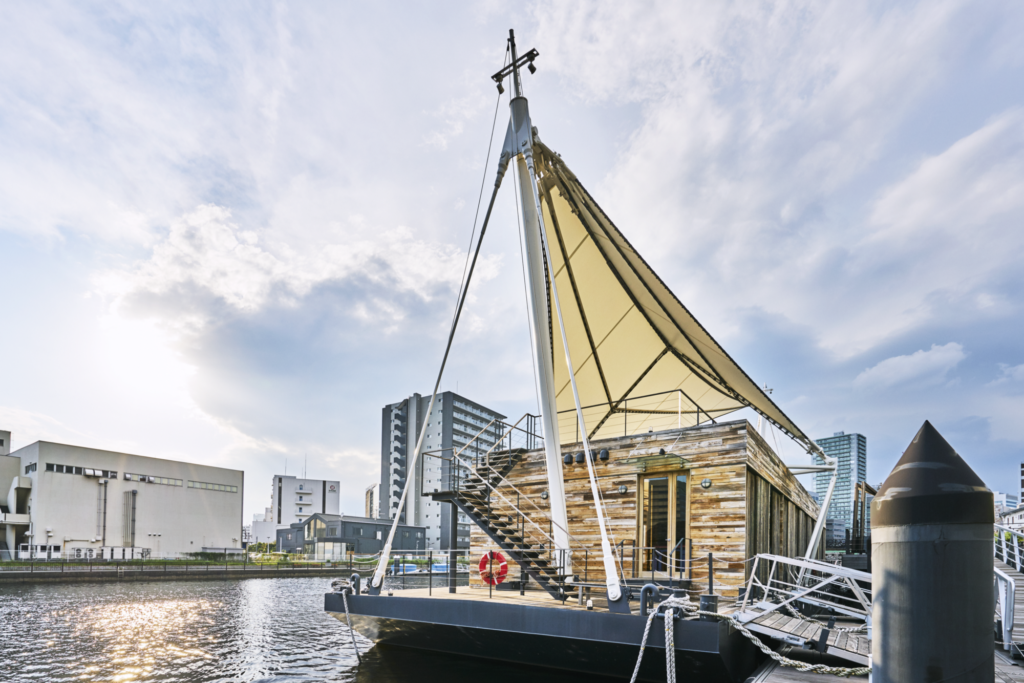
T-LOTUS M
An event space afloat the Tennozu Canal. Also supervised by Kengo Kuma.
With a basement, ground floor, and top deck, it can accommodate 170 people. With the breeze and light from the canal, it’s perfect for parties.
These businesses were invented by thinking outside of the traditional “warehouse business” box and redefining its meaning and questioning how to enhance the value of what already exists. Various projects are on the go with the rapidity of a startup firm, getting down to work the day the plan is approved. There is no clear criterion for approval, only the presenter’s determination.
“I hardly ever say no. I just say, ‘Try it then.’ That’s it. But I evaluate the results severely. I don’t like looking for the blame in external factors.”
Warehouse TERRADA has become a compact but highly profitable corporate structure
. Sales are only a seventh of what it once was, but the cash flow has grown eightfold. That means each employee sells about 100 million yen per year on average.
“I can’t do anything without them. I just sit here playing the ‘CEO.’ I hate being supervised, so I don’t supervise others.”
To appreciate employees’ accomplishments instead of supervising them. One unique arrangement is the “coin” system in which superiors and subordinates can evaluate each other fairly. If one person has done something great or is working hard, they are given gold or silver coins worth up to 50 thousand yen. If they botch up or cause someone trouble, they are given skull coins.
“It’s not like it criticizes the person. By acknowledging the events of the moment, we can contemplate what we can do. I don’t want to predict the future. I don’t say, ‘If you try hard now, you could become a high-earning winner.’ I might die tomorrow, or the company might break up. So let’s evaluate today’s events today. Let’s work hard so we can enjoy today.”
Live for today and don’t worry about the future
Mr. Nakano spends two-thirds of the year overseas. He values the people he meets over the trip itself. He’s inspired when he’s lost in the hustle and bustle of a little-known nameless place. He often walks from Shinjuku to Shinagawa, stopping at shops he finds on the way. He has even put the works of a craft artist he met during a trip on sale at a gallery.
“I’ve never been goal-oriented. I don’t have any visions as a CEO. I just judge what’s in front of me and think what it is that I can work furiously on today. And since I’m going to do it anyway, why not choose to have fun?”
He has a philosophy for perceiving the nature of things and enjoying change.
“I was born during the war and was brought up by my grandparents. I’ve lived in solitude since elementary school. I still don’t like to weigh myself down. I don’t own a house, a car, or even a watch. I don’t have anything to protect, which might be why I can see things more candidly.”
As he goes back and forth between rapidly growing countries such as Taiwan, Malaysia, and Singapore, he takes a look back on Japan.
“Everyone likes to hear bad news, but that’s not everything. There has to be some heartwarming things happening around you. We only live about 100 years at best, so it’s all about how you live it. We’re all going to hell anyway,” he says with a chuckle.
“And if you’re already living in one, make the best of it.I judge by the day, so you shouldn’t believe what I say. All this is only the ‘present me’ speaking,”
Mr. Nakano laughs as he jauntily slips on his shades…..






